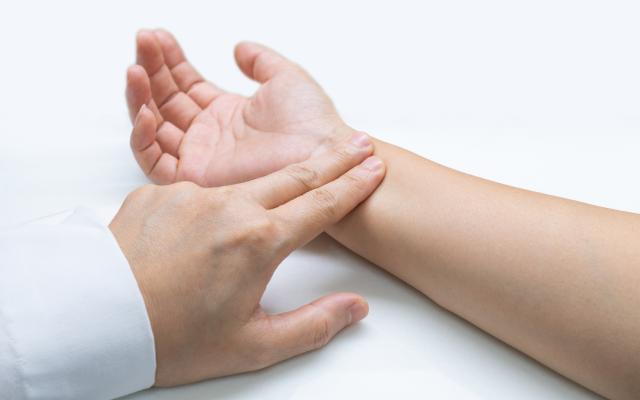Een congenitale traanbuisobstructie is niet zeldzaam: deze zou voorkomen bij 73 van de pasgeborenen, maar slechts bij 6 problemen geven.12 De aandoening wordt in de literatuur ook wel aangeduid als congenitale nasolacrimale mucocele of dacryocystocele.3 4 In het merendeel van de gevallen gaat het om een enkelvoudige traanbuisobstructie, veroorzaakt door een dunne rudimentaire membraan in het distale deel van de traanbuis. Deze geeft meestal niet meer verschijnselen dan tranenvloed over de onderste oogleden en muceuze afscheiding. Indien het traankanaal bovendien aan de proximale zijde bij het oog is afgesloten, hoopt het secreet zich op in de traanzak en ontstaat er een zwelling in de mediale ooghoek, soms van een zodanige omvang dat gelaatsdeformatie en respiratoire insufficiëntie optreden. Deze gecompliceerde vorm van nasolacrimale mucocele is als zodanig pas recentelijk in de literatuur beschreven, is zeldzaam en leidt soms tot vitale problemen.5-10 Tot op heden werden er in…
Dysmorfe gelaatskenmerken door gecompliceerde congenitale traanbuisobstructie

- Congenital nasolacrimal duct obstruction (in the literature also called congenital nasolacrimal mucocele or dacryocystocele) presents either as a simple nasolacrimal obstruction with epiphora or as a complicated obstruction on both sides of the lacrimal sac with midfacial deformation and respiratory insufficiency. Five neonates were treated for such complicated congenital nasolacrimal duct obstruction. Symptoms varied from an inner canthal purple-red swelling in the medial corner of the eye, with epiphora, to a serious midfacial deformation with respiratory insufficiency. The presence of a bilateral nasolacrimal mucocele leads to a broadened nasal bridge, which may be falsely interpreted as a dysmorphic feature of a congenital syndrome. Recognition of the condition allows a quick and efficient diagnosis and prevents unneccessary diagnostic procedures and anxiety. Differential diagnosis mainly includes frontobasal encephalocele and haemangioma. Treatment consists of massage, and catheterization if necessary.




Reacties